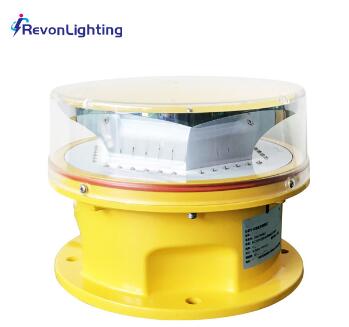In the realm of aviation, safety is of utmost importance. Tall structures, buildings, and wind turbines can pose significant risks to aircraft if not adequately marked. Red obstruction lights play a crucial role in ensuring aviation safety by providing visual cues to pilots, especially during low visibility conditions or at night. In this article, we will delve into the significance of red obstruction lights, their different types, and their applications.
Understanding Red Obstruction Lights:
Red obstruction lights are specifically designed to make structures or objects visible to pilots. They emit a constant red light that can be seen from various distances, alerting pilots to the presence of obstacles in their flight path. These lights are typically installed on tall structures exceeding a certain height, as mandated by aviation authorities.

Types of Red Obstruction Lights:
There are several types of red obstruction lights available, each serving a specific purpose:
Steady Burning Red Lights: These lights emit a continuous red light and are commonly used on tall structures such as communication towers, buildings, and chimneys. They provide a constant visual reference for pilots.
Red LED Lights: LED technology has revolutionized the lighting industry, including obstruction lighting. Red LED lights offer numerous advantages, including energy efficiency, longer lifespan, and precise control over light intensity. They are increasingly becoming the preferred choice for red obstruction lights.
Applications of Red Obstruction Lights:
Red obstruction lights find applications in various industries and sectors:
Aviation: Tall structures, such as communication towers and high-rise buildings, are equipped with red obstruction lights to prevent potential collisions with aircraft. These lights serve as vital visual cues, guiding pilots away from potential hazards.
Wind Energy: Wind turbines are often installed in large numbers across vast landscapes. Obstruction lights are essential for wind turbines, as their height can exceed the limit set by aviation regulations. Lighting systems on wind turbines ensure visibility to aircraft, reducing the risk of collisions.
| 12 | 14 |
| red obstruction light | 15 |
| 13 | 34 |
Telecommunications: Communication towers, which are often tall structures located in remote or rural areas, require red obstruction lights. These lights enhance aviation safety by ensuring that pilots can identify and navigate around these towers.
Compliance with Aviation Regulations:
Aviation authorities, such as the International Civil Aviation Organization (ICAO) and local regulatory bodies, have established guidelines for obstruction lights. Compliance with these regulations ensures that lights meet specific standards for visibility, color, and intensity. It is essential to select red obstruction lights that adhere to these regulations to maintain aviation safety.
Maintenance and Monitoring:
Regular maintenance and monitoring of red obstruction lights are crucial to ensure their continued functionality. This includes periodic inspections, cleaning, and testing to verify that the lights are operating correctly. Some advanced systems incorporate remote monitoring capabilities, enabling real-time troubleshooting and ensuring uninterrupted operation.
Conclusion:
Red obstruction lights are integral to aviation safety, providing pilots with critical visual cues to avoid potential hazards. Compliance with regulatory standards, the selection of appropriate light types, and proper maintenance are vital for the effective functioning of red obstruction lights. By prioritizing aviation safety and investing in reliable and compliant red obstruction lights, stakeholders in the aviation industry can contribute to safer and more efficient airspaces.